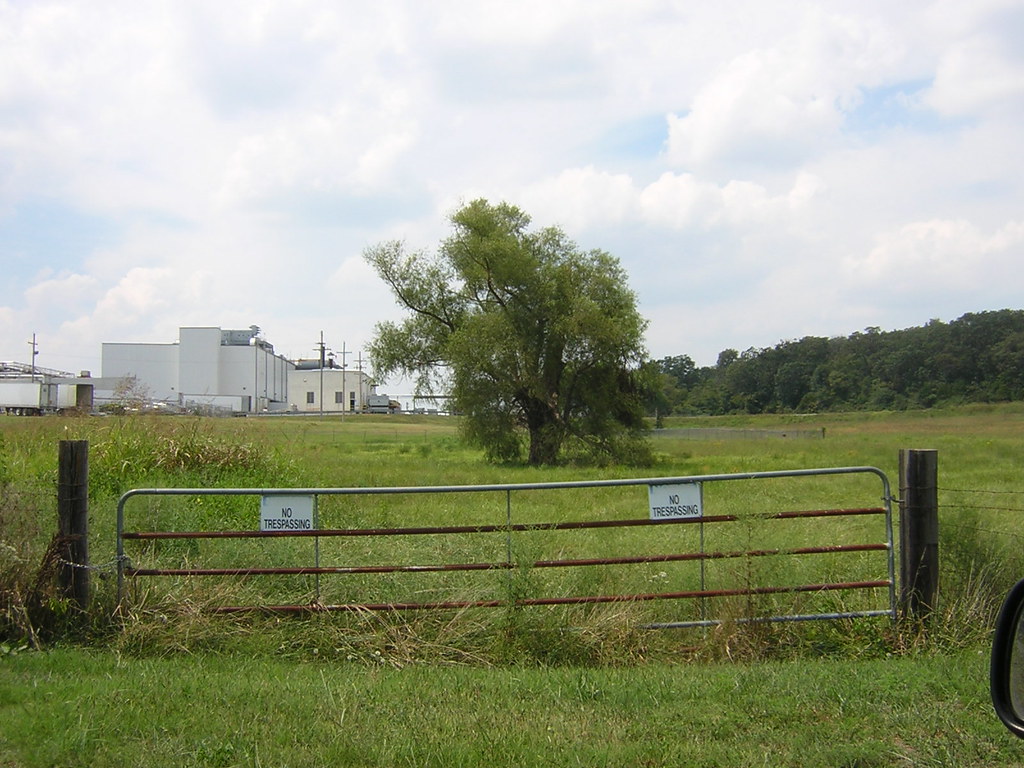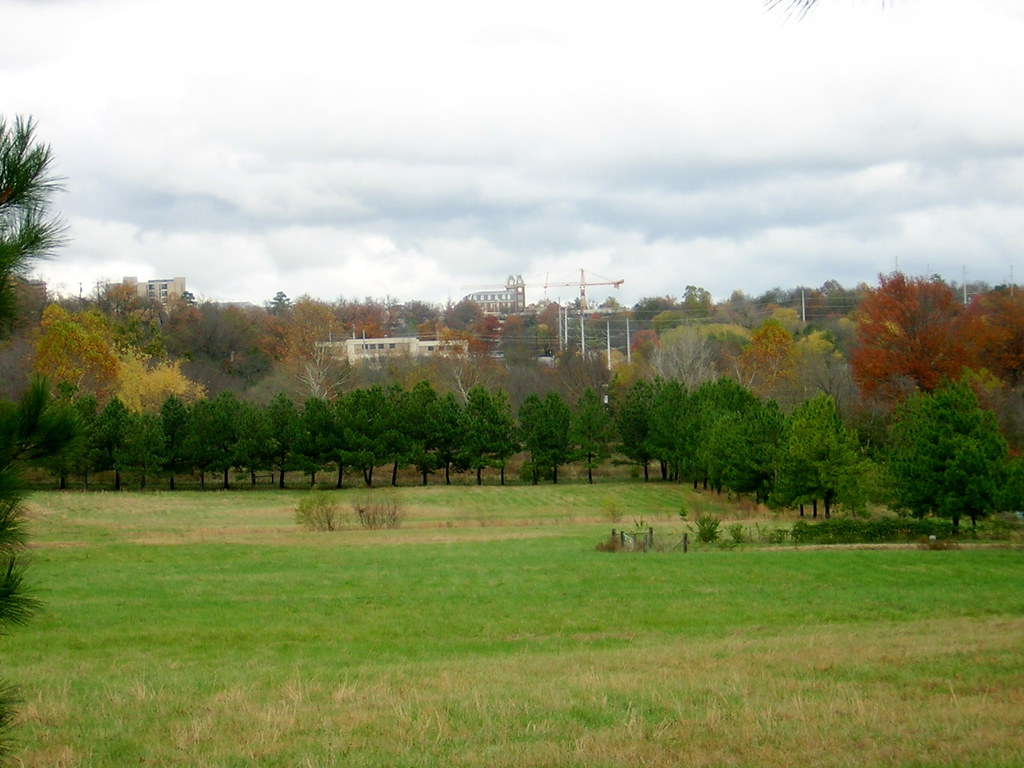The majority of people who live in the Walker Park neighborhood didn't attend the charrettes (the intense design and planning meetings the city's planning staff worked so hard to coordinate).
That is a shame. Probably, a majority don't know what occurred in the meetings. The few who attended offered a lot of suggestions and maybe some of their ideas will begin to become reality.
Their ideas are mostly good, although some would be incredibly expensive to turn into reality and even the best will take time and money to take shape.
Some ideas are bad ideas from the point of view of many.
Strangely, some ideas that go against the city's newly adopted sustainability effort are based on FEAR. And that is sad and disappointing to at least a few of us who truly love and appreciate the park and the surrounding neighborhood and the relatively inexpensive services provided in the area.
I'll leave it to others to explain what might be the source of fear in the discussion of possible future plans. Let's sample a few excerpts and comment, preferably after you read the full newspaper story.
The full story in the Northwest Arkansas Times of Monday, Dec. 10, 2007, is available at:
Northwest Arkansas Times storyhttp://www.nwanews.com/nwat/News/60100
Let's sample a few excerpts and comment, preferably after you read the full newspaper story.
Walker Park, at 64 acres, is one of the largest in the city, excepting the parks associated with lakes. But there are sections that aren't used at all because of brush or people not feeling safe, said Karen Minkel, senior long-range planner.
COMMENT: "Brush" or understory vegetation as it is known when standing in conjunction with mature trees is extraordinarily important in our parks because it is being removed from private yards and, in much larger portions, from every new construction site in the city.
Removing vegetation is among the greatest threats to our climate. Vegetation breathes carbon dioxide and exhales oxygen.
Take a look at the Keeling chart at the following link and see just how radically the earth's atmosphere has changed in recent decades:
Carbon Caps Task Force blogspotGiant coal-fired plants that produce electricity are among the worst causes. But anything that burns contributes to the problem as fire depends on oxygen and releases carbon into the air.
Song birds, especially the ones most people love to see and feed, cannot live without nesting sites. And understory vegetation (brush and low-growing trees and vines) provides nesting and roosting sites for them. Thickets not easily entered by human beings are best. But any patch of brush is important. And those same plants offer food not only to birds but to numerous other species as well.
If you attend Tuesday's (Dec. 11, 2007) open house at the Arkansas Audubon office near Fayetteville's downtown square, ask to see one of their backyard wildlife brochures. I hope they have plenty to give away. But a quick read will offer tips not only for individuals but even for people talking about managing parks.
Walker Park has a magnificent stand of hardwood timber on its eastern acreage. Whether I choose to stop and walk through those woods are not, I USE them every day when I drive by.
Trees, brush, flowering plants and tall grass comfort me in our rapidly changing town. There was a time when Walker Park's wooded area and its riparian zone (streamside greenspace) offered unmitigated comfort, because I believed it would never change.
For several years, changes have slowly come. New parking lots have taken out trees and even the very soil on which they depended. The wonderful Senior Activity Center replaced a beautiful portion. The park for skateboarding and such buried a lot of wonderful soil and grass under pavement.
The paved "trail" along the west side was built in the riparian zone of Spout Spring Branch, which brings water from as far away as the east side of Fayetteville High School's campus to Maple and Lafayette and Dickson streets and the square all the way up to N. College Avenue through its tributary known as Tanglewood Branch in addition to its own water from the western and southwestern slopes of Mount Sequoyah and the beloved Spout Spring near Center Street.
Fayetteville's City Council recently passed a resolution supporting the protection of riparian zones, so surely the trail planners will work to see that soil won't be removed or buried under red dirt and asphalt or trees and "brush" removed from riparian areas as future trail routes are selected. A treeless trail isn't pleasant to use in summer or winter. Well-vegetated stream corridors offer not only shade in summer but serve as shelter belts to weaken the wind in winter. And paving done near stream banks inevitably results in increased erosion.
The Times story continues: The proposal would add paved and nature trails in the northeast quadrant, which would open the park to people who live north of Sixth Street and make it more usable and connected to the neighborhood and the city.
COMMENT: The theory is good and can be carried out without damaging the forest and contributing to global warming by creating paths without any addition of impermeable material. There is nothing about many miles of the city's "trails" that attract people wanting a nature walk. One can pass along the edge of the wooded area and feel "safe" at Sixth and at Thirteenth Streets. And near the halfway mark, there is a wide, meandering paved trail from the publicly accessible Senior Center acreage facing S. College and westward to the open areas of the park.
A small entryway at the northwest corner of Walker Park would be nice, but a sign and a gently blazed trail should be the route into the park's only natural portion. That would be in keeping with our sustainability goals and keep the aborbent soil to help meet the stormwater-regulation goals.
The Times story continues: Adding lighting and benches to the trail along the creek (Spout Spring Branch) and the park's western border, a children's play area with a water feature, and extending the Frisco Trail from downtown are other elements of the vision.
COMMENT: Unobtrusive benches would be nice. Lighting would be OK if solar powered lights are provided. The city already is gradually installing street lights and traffic-signal lights that use less electricity than the old ones did, I have heard. But, again, bright lights should not be placed in a way that interferes with the normal habits of wildlife in the area.
The Times story continues: "What we heard a lot was that people wanted to have more activity in the park, in that sometimes if they were on a trail and there wasn't a baseball game or something going on, they felt like they were by themselves," said Tim Conklin, the city's planning and development-management director. "If there's no one around, you don't have that sense of safety. If there's lots of people around, you feel safe and comfortable. We heard that from a lot of people."
In contrast, a lot of people go to parks and seek out places to be alone. Many park visitors are totally focused on themselves and their activity. Noise and activity of the birds and squirrels and such are plenty for them.
I play softball in Walker Park on many Sunday afternoons with others who enjoy an informal game with men, women and children participating in all seasons of the year. I sometimes play basketball at either the southeast corner of the park or the northwest corner and would like more courts because on many weekends and summer evenings people stand or sit and wait to play. At least one of the baseball fields should have deeper fences to accommodate those all-age softball games. I have fished in Spout Spring Branch and several times just waded the creek to photograph the trees, vines, rocks, birds and other wildlife.
Being an urban stream, of course, Spout Spring and its tributaries such as Tanglewood Branch are constantly polluted by street runoff and littered by debris. Audubon and the boy scouts and other volunteers haven't done a cleanup in about two years. Naturally, the next significant rain washes in so much new debris that evidence of the cleanups is always quickly wiped out.
One shocking photo opportunity I have not checked on lately is between South School Avenue and Walker Park where a large sewer line sags badly as it crosses Tanglewood Branch. Former Alderman Swifty Reynolds walked there with me to see it about three years ago. Maybe he reported it to the water and sewer officials and got it fixed. Maybe one day soon I'll go back to see it.
But back to the Times story:
Continuing Ninth and 13th streets to South School Avenue would create a western entrance to the park, connecting the neighborhood to the commercial district.
WHOA!!!!!
A narrow walking bridge would be appropriate somewhere outside the riparian zone of Tanglewood Branch starting somewhere near Ninth Street and South School Avenue.
But opening those streets shouldn't be in the plan. Construction of bridges for even the narrowest roadways always takes out a huge chunk of riparian vegetation. The streets would also take some acreage out of the soccer fields because it is unlikely that the new facility for skate boarding would be removed. And don't forget the beautiful, mostly wooded wetland on private property in back of the mostly commercial property facing South College Avenue.
It should not take more than one of the following to veto that part of the plan: the tree administrator, the watershed/stormwater engineer or the sustainability coordinator.
Fortunately, there are far too many real infrastructure needs at a time of revenue shortage for that idea to get priority.
There are many wonderful ideas in the plan and a few others that appear absurd or extremely disruptive to current residents and businesses.
I hope plenty of people show up, especially people who skipped the charrettes. It is not too late to offer more positive suggestions and to bring up questions about some already on the board.
The vision for the Walker Park neighborhood will be shared with the public from 6:30 to 8 p.m. Tuesday at the Fayetteville Senior Center at 945 S. College Ave. There is plenty of room for several hundred people to attend for at least part of that time. And the planners WILL listen. It's everyone's plan.
By the way, the Audubon Arkansas' open house runs from 3 p.m. to 7 p.m. with only a 30-minute overlap. There is no excuse not to do both. The Audubon office is at 34 East Center Street, less than a half block west of College Avenue and a block east of the square. The senior center is on South College only about the equivalent of 11 blocks south of the Audubon office.
As you travel between the too places, imagine what the construction work to make some of the proposals into reality would actually be like if you were a person living, working or traveling through the area each day.
The Fayetteville City Council meets in agenda session at 4:30 p.m. but you can watch the video of that on the government channel, Cox Cable 16, on Wednesday morning. The agenda should be online at accessfayetteville.org to look at. I didn't have time to search for it tonight. Maybe it is on Jeff Erf's alternative city site.































